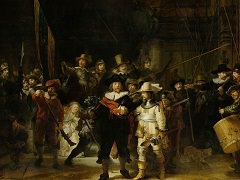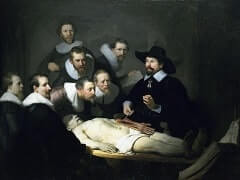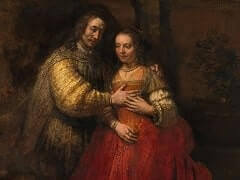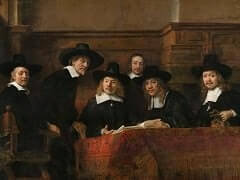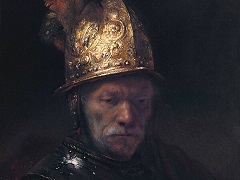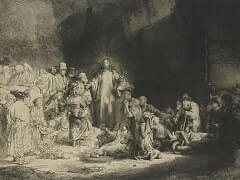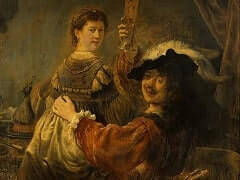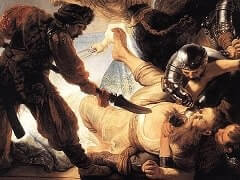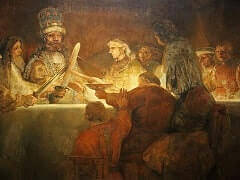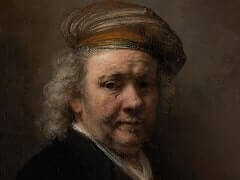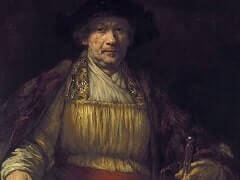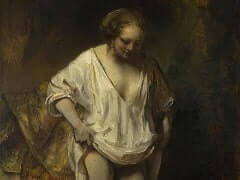Hundred Guilder Print, 1649 by Rembrandt

The Hundred Guilder Print is an etching by Rembrandt. The etching's popular name derives from the large sum of money supposedly once paid for an example. Rembrandt worked on the Hundred Guilder Print in stages throughout the 1640s, and it was the "critical work in the middle of his career", from which his final etching style began to emerge. He probably completed it in 1649.
As well as being a master artist, Rembrandt was a master etcher and has been called the greatest etcher of all time. Etchings produced black and white scenes which could be duplicated so that the artist was able to sell numerous copies rather than just one original work. This was financially beneficial to the etcher, since he could sell more items; much of Rembrandt's income came from his etchings. His works are technically of extremely high quality and full of expression, providing the opportunity to explore the contrasts and variations between black and white, and light and shade,
In the Hundred Guilder Print, Rembrandt wove together in a horizontal composition individual episodes of the Gospel of St. Matthew to illustrate its full chapter 19. It is an exquisite puzzle of darks against lights and lights against darks that draw the eye across the image. He positioned Christ as a luminous beacon between the lightly etched left side and the sumptuous darkness he created on the right.
In one frame, Rembrandt illustrates no fewer than four moments from chapter nineteen of the Gospel of Saint Matthew, including the famous (mistranslated) parable, "It is easier for a camel to go through the eye of a needle than for a rich man to enter into the kingdom of heaven." The rich young man sits with his hand over his face to the left of Christ, while the camel stands in an almost total shadow in the extreme right. With the central, towering position of Christ and the movement of light to dark across the surface, Rembrandt's composition unifies the print's narrative complexity.
The Hundred Guilder Print can be counted among Rembrandt's most beautiful and complex compositions.


